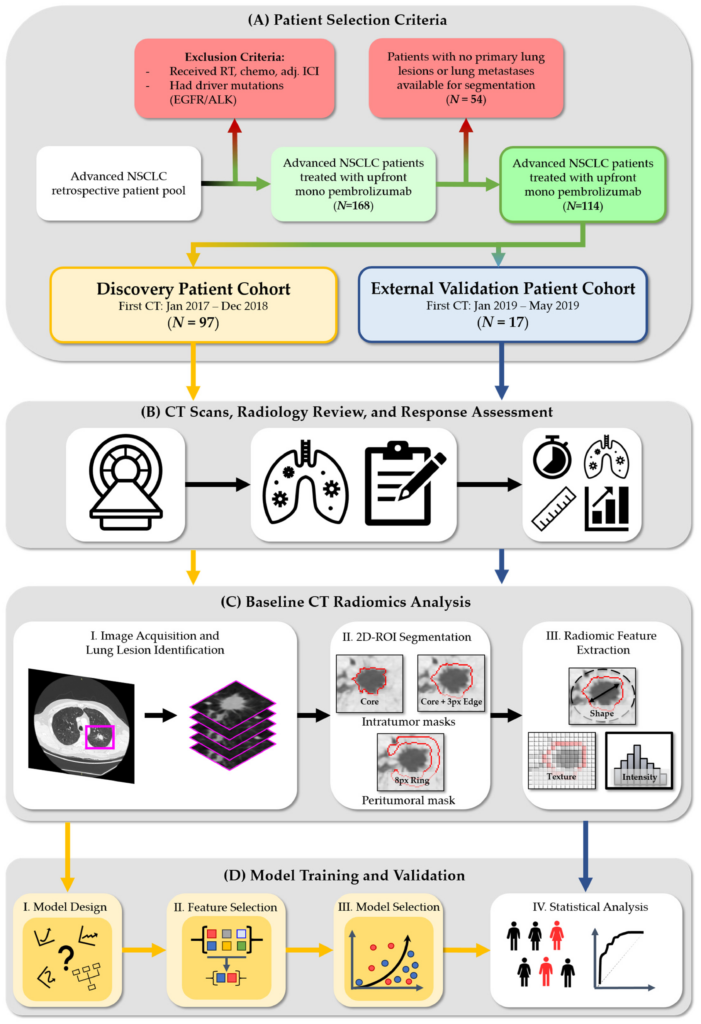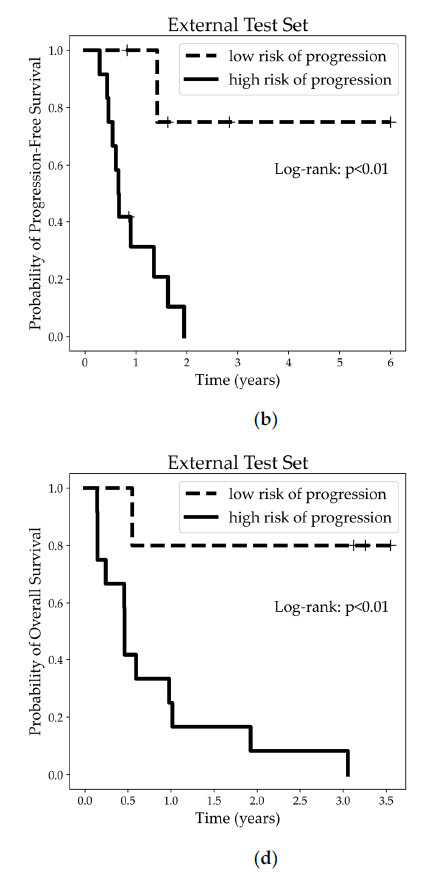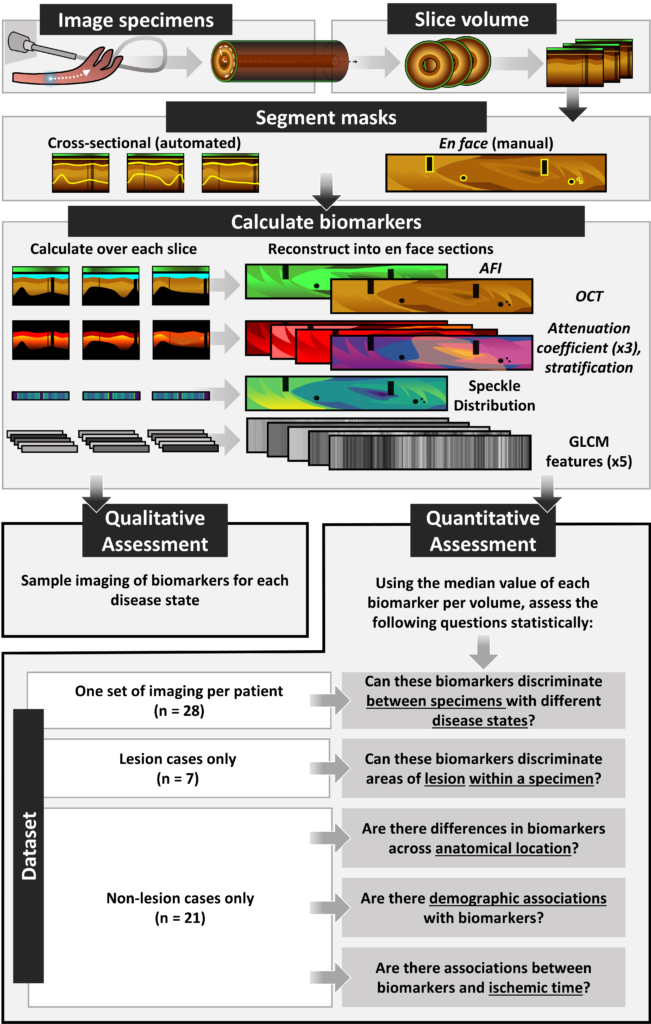Ian Janzen, a PhD student in our group has a new publication in MDPI Cancers.
Lung cancer is the leading cause of cancer deaths in Canada. Most lung cancers are diagnosed at advanced stages, where treatment pathways are determined by target mutations. Current standard of care for patients with cancers with a high PD-L1 score is an immunotherapy regimen – however, nearly half of patients do not respond to this approach.
Ian’s work develops a predictive risk model using a combination of imaging features (‘radiomics’) derived from CT scans before treatment and clinical descriptors to determine which patient cohorts will not benefit from standard immunotherapy treatments.























